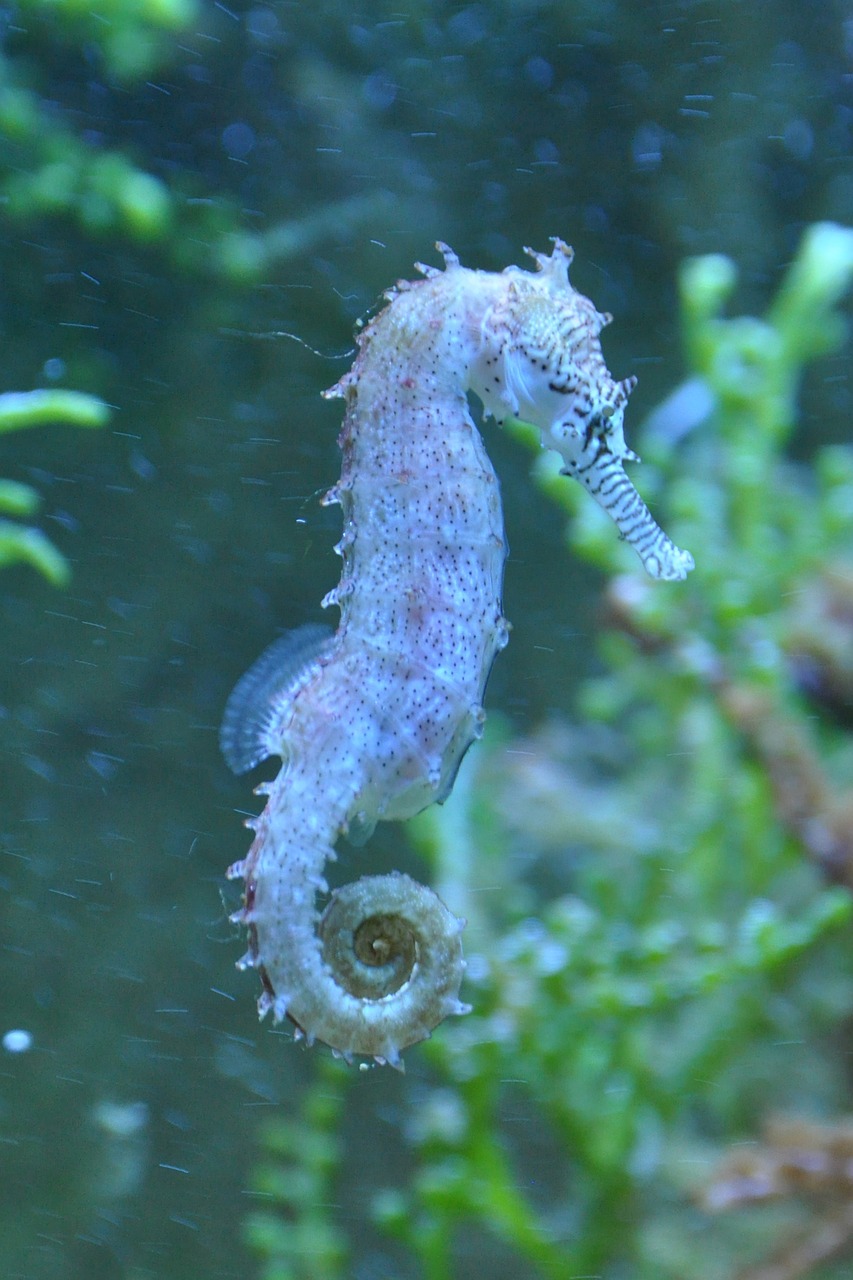Seahorses are small fish belonging to the Syngnathidae family. They have been on our planet for quite some time: their fossil remains are found in layers dating back 40 million years.
The Steed of the Depths
The first thing that grabs attention about seahorses is their unusual body shape, reminiscent of a chess knight. Unlike other fish, they hold their bodies vertically rather than horizontally. This is because their large swim bladder is located in the upper half of their body. Seahorses come in a wide range of sizes. Some are real giants, with bodies reaching up to 30 centimeters in length. The smallest seahorses are only about 4 centimeters long.
Interestingly, biologists are unsure how many seahorse species inhabit the ocean depths, as these fish have a unique ability to change not only their color but also their shape. This ability to change color helps seahorses hide in seaweed or coral from predators.
It is nearly impossible to spot a camouflaged seahorse. This adaptation helps them both avoid predators and hunt, as seahorses are carnivorous and feed on small benthic crustaceans. Their feeding method is also fascinating: when prey approaches, they quickly suck in water along with the prey.
Movement and Defense
Seahorses’ bodies are covered in bony plates that form a strong armor capable of protecting them from predators. This armor is so tough that it remains intact even after the seahorse has died.
Seahorses have only three fins. The dorsal fin helps them maneuver while moving forward, and the two gill fins function as rudders, helping maintain balance. If threatened, seahorses can reach impressive speeds by flapping their fins up to 70 times per second. They can also evade predators by adjusting the volume of their swim bladder, allowing them to make quick and precise maneuvers. However, in the absence of danger, seahorses conserve energy, spending much of their lives hanging motionless in the water, gripping seaweed or coral with their tails.
Habitat
Seahorses prefer warm tropical seas. Only two species are found most: the Black Sea seahorse and the Japanese seahorse. Occasionally, long-snouted seahorses from the Mediterranean swim into the Black Sea.
Seahorses prefer to live in calm waters, as they do not like fast currents or frequent tides.
Reproduction:
Caring Fathers During the mating season, seahorses press closely against each other. The male opens a pouch on his belly, where the female deposits a few eggs. The eggs are fertilized in this pouch.
It is the male seahorse that carries the offspring. On his abdomen, there is a special chamber rich in blood vessels. During “pregnancy,” a true placenta forms in the pouch to nourish the young. Remarkably, a male can carry up to several thousand baby seahorses during a single pregnancy.
Giving birth is extremely challenging for the male, who can even die from the strain. In contrast, females are more carefree when it comes to reproduction. During the mating season, they may mate with multiple males. However, some species form stable pairs. Such “spouses” remain faithful to each other for life. If one partner dies, the other may die from grief.
Enemies
Catching and eating a seahorse is not easy, thanks to two factors: their ability to move quickly and their bony armor. However, many creatures hunt these unusual fish. Seahorses are preyed upon by rays, certain species of bream, remoras, and clownfish. Crabs can also hunt seahorses, as they are capable of digesting even such bony prey.
The primary enemy of seahorses is humans. Unfortunately, people pollute the seas, causing seahorses to rapidly lose their habitat. Another reason for their decline is that people catch seahorses to make souvenirs for tourists. Thus, these remarkable fish have fallen victim to their unique appearance. Additionally, seahorse liver is considered a delicacy. To prepare an exotic dish, dozens of seahorses must be killed.
Today, seahorse populations are rapidly declining. Three dozen species are listed in the Red Book. To prevent the extinction of this unique family, humans need to reconsider their actions. Biologists are taking measures to preserve seahorse populations by breeding them in artificial ponds and releasing them into the sea. Will this be enough to save seahorses from extinction? The answer will become clear in a few decades…
